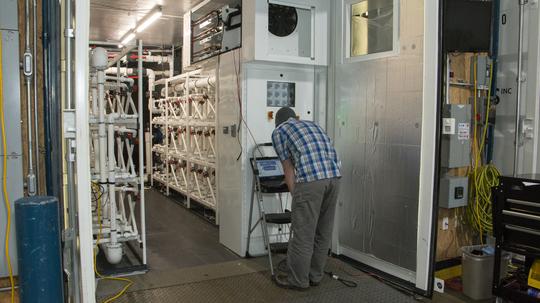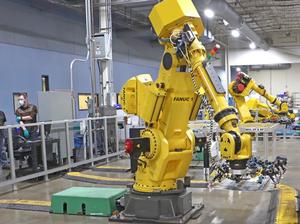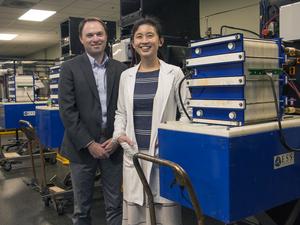
ESS Inc.’s stock has nearly tripled in value in two days of public trading. Which raises the question: Could the Wilsonville grid-scale battery maker take advantage of the runup and issue and sell new stock?
Asked via email about the possibility, CEO Eric Dresselhuys replied, “ESS has no plans at this time.”
Trading as GWH on the New York Stock Exchange, ESS closed at $23.80 on Tuesday, up $13.38, a 128% gain. It began its trading life on Monday at $8.21.
In recent months, other SPAC-merger stocks have caught fire with day traders, then proceeded to quickly give back much of their gains. One factor driving the volatility of the stocks is a lack of liquidity due to withdrawals from their SPAC mergers — as happened with ESS — and lock-ups for existing company shareholders.
A company in ESS’ situation could stand pat for now, riding out the volatility, for a few reasons, according to Timothy Carkin, senior vice president for alternative assets at the Portland investment firm Ferguson Wellman Capital Management.
“Issuing shares is an option but that would take time and regulatory steps,” Carkin said via email, adding that such a move “probably wouldn’t look good to the street.”
And ESS probably is on the radar of a lot more investors and analysts now, he said.
“In all, the biggest benefit to the company is the notoriety of the advancing stock price and the growing market cap,” Carkin said. “This means it shows up on more screens and it becomes more visible to institutional investors.”
ESS’ market capitalization is unknown because exactly how many shares are outstanding hasn’t been determined in the wake of its complicated SPAC merger closing. But it’s three times whatever it was a few days ago, and likely in the neighborhood of $3 billion.
That new girth could give the company an opportunity to pursue more favorable financing arrangements.
“But again, should they do that so quick after the SPAC conversion?” Carkin asked. “More than likely, they stick to their plans and schedules when it comes to capital. They now have cash and growth plans. Investors are watching to make sure they follow through.”
ESS netted $308 million in going public, enough to pursue its plans, Dresselhuys has said.
The CEO said ESS is getting attention partly because it’s new to the market, but also because of what it has to offer.
“The current activity is not atypical for a newly listed stock,” he said. “There has certainly been more media coverage on the company as a result of the listing, but more to the point, battery storage is a key driver of our energy transition and is attractive to investors who believe in and want to take positions in what we offer: a clean, safe, and sustainable long-duration storage solution.”
Asked whether heightened profile was good for the company, Dresselhuys replied, “We really don’t see any impact to our business.”






